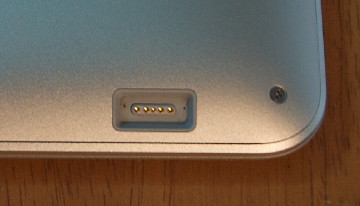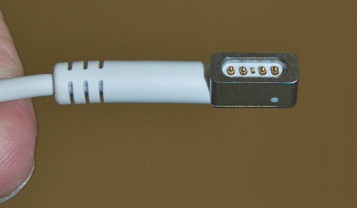|
|
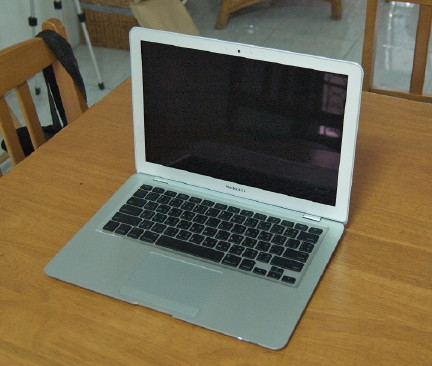
In January I managed to handle the new MacBookAir for a few minutes the day after its announcement. It was for only a few minutes and under the watchful eyes of Apple management. This week I was given a MacBookAir for a few days to look at more closely. I collected it from Apple's offices in Siam late one afternoon. The last part of the journey home was by taxi with a load of shopping. My own MacBookPro was on my knees in its bag and I could feel the weight. The MacBookAir was in a box beside me.
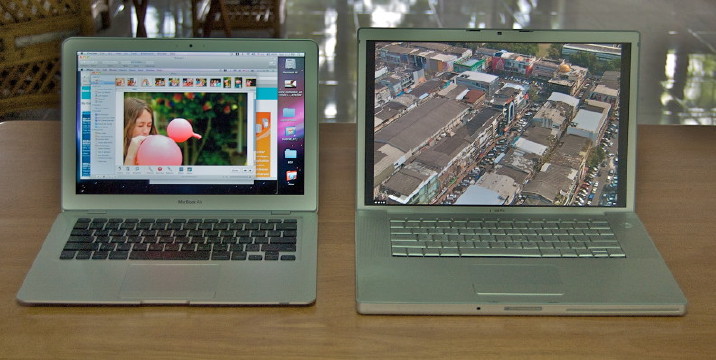
I took it out of the packaging, which itself is a demonstration of Apple's top to bottom design ethos, lifting it easily with one hand. This has been one feature of its tenure here: the MacBookPro needs firm handling to be safe; the MacBookAir can easily be moved while being held in the fingers. It starts up quickly enough in Mac fashion, but the sleep and wake actions add to its functionality as a computer for meetings and conferences. I usually put my Macs into sleep mode with the key commands (Option+Command+Eject), although closing the lid will do. Opening the lid wakes the computer. With the MacBookAir, ten times in quick succession I shut the lid then opened it again. Each time the Apple light on the lid went out within a second, although it was too soon for the power light to begin pulsating. I opened the lid immediately and the screen came on right away: easily under a second. When trying the same process with my MacBookPro a couple of times, the screen went off and the Apple light was extinguished within a second or so, but opening the lid gave me a delay of between five and ten seconds. Quick access is important at meetings as, without fail, the moment the presenter starts to put the computer away, someone will come up and ask a question. It happens to me at the end of a class: the moment I put the computer to sleep, a student will appear by my side and I have to open the lid again. The delay would be more if I shut down (I never do), but with the instant availability of the MacBookAir (provided by the LED screen), the state of readiness gives an impression of professionalism. The computer has the 13.3" glossy screen and the difference between my screen with its matte finish (which I prefer for work with photographs) provided a really pleasant viewing experience both for pictures and movies.
I preferred this keyboard to the one on my own MacBookPro. It seems to share the feel of the latest Apple keyboard such as is found on the iMac (and which has just won a design award at CeBit in Hanover). The trackpad is larger than other Mac trackpads and this is to allow for the new "gestures" that can now be used. I opened a photogaph in Preview (which is also used for PDF viewing). In there, I was able to rotate the image using two fingers in a twisting motion. It was possible to hold the image halfway, but the application preferred vertical or horizontal display. I was also able to use the "pinch", a feature from the iPhone and the iPod touch, to enlarge the image with a two-finger "gesture". The pinch can also be used in iPhoto, but the image rotation gesture is not available. These new gestures are also now on the most recent MacBookPro.
Despite the larger trackpad, I initially had problems making the rotating gesture and the pinch on this computer, although I can do this easily enough on my iPod touch. I got it right after a bit of practice. The thin trackpad button did not suit me and, because of the way I work on my own computer, kept missing this. Mac notebooks allow one-click operations on the trackpad (as well as the trackpad key) although I generally turn this off. This feature and the other gestures can be accessed via Mouse and Trackpad Preferences. Within this preferences panel, a small video window shows all of the gestures as they are selected. The MacBookAir has no optical disk drive, although there is an external one available as an option. Neatly concealed are USB, micro-DVI (video) and headphone ports. A new-style "Magsafe" connector provides power.
Delving deeper in Part Two.
|
|
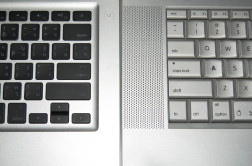 The keyboard is a bit of a hybrid. It has the black keys of the MacBook, but these are lit from inside like the MacBookPro. The feature uses an ambient light sensor and adjusts to the brightness of surroundings.
The keyboard is a bit of a hybrid. It has the black keys of the MacBook, but these are lit from inside like the MacBookPro. The feature uses an ambient light sensor and adjusts to the brightness of surroundings.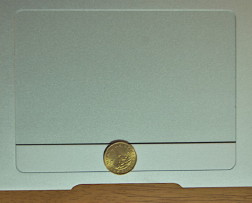 I was able to enlarge text on a web page in Safari, but not on a rich text file (RTF) opened in TextEdit. Both enlargement and rotation could be used with a PDF file opened in Preview.
I was able to enlarge text on a web page in Safari, but not on a rich text file (RTF) opened in TextEdit. Both enlargement and rotation could be used with a PDF file opened in Preview.